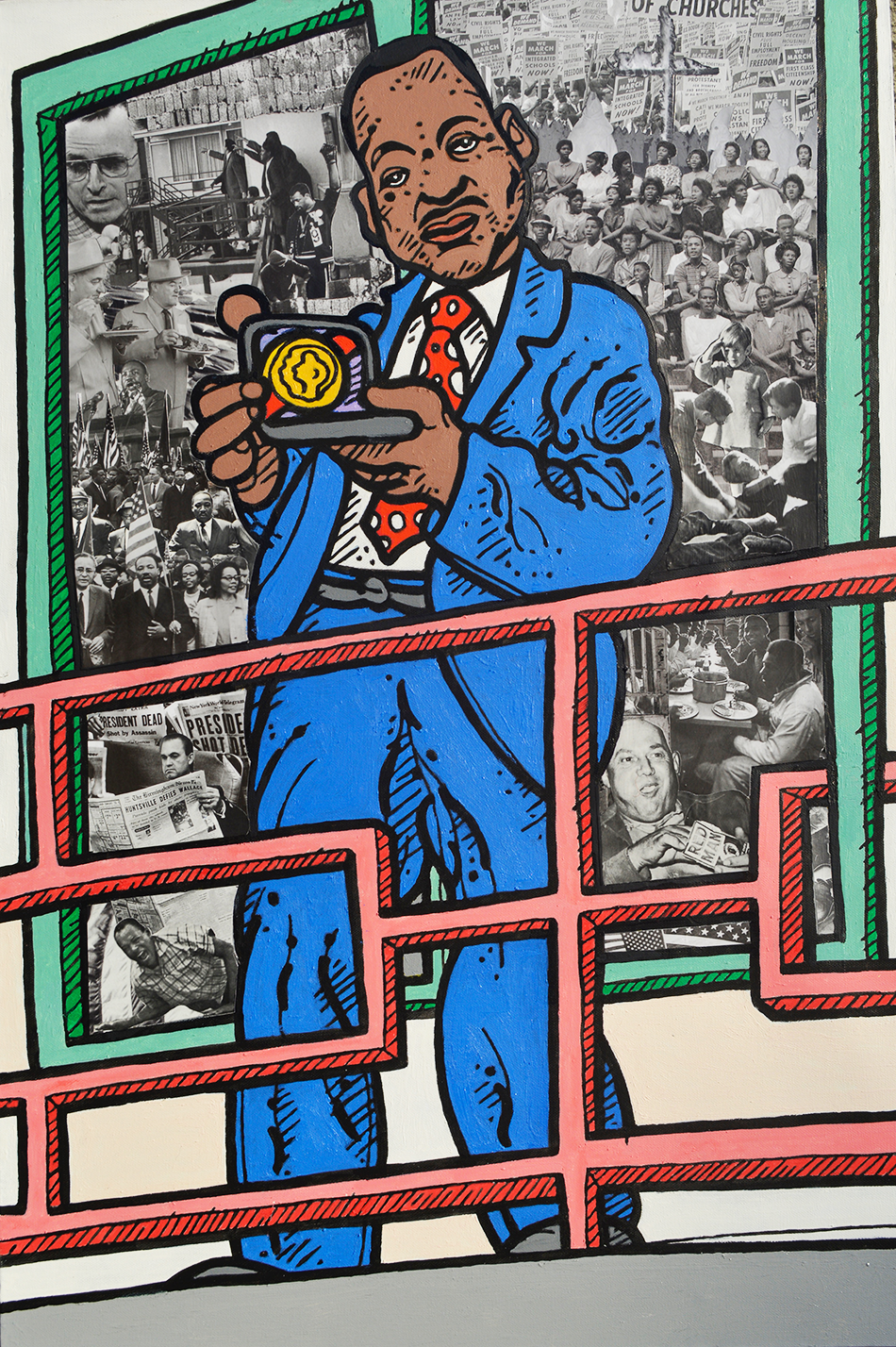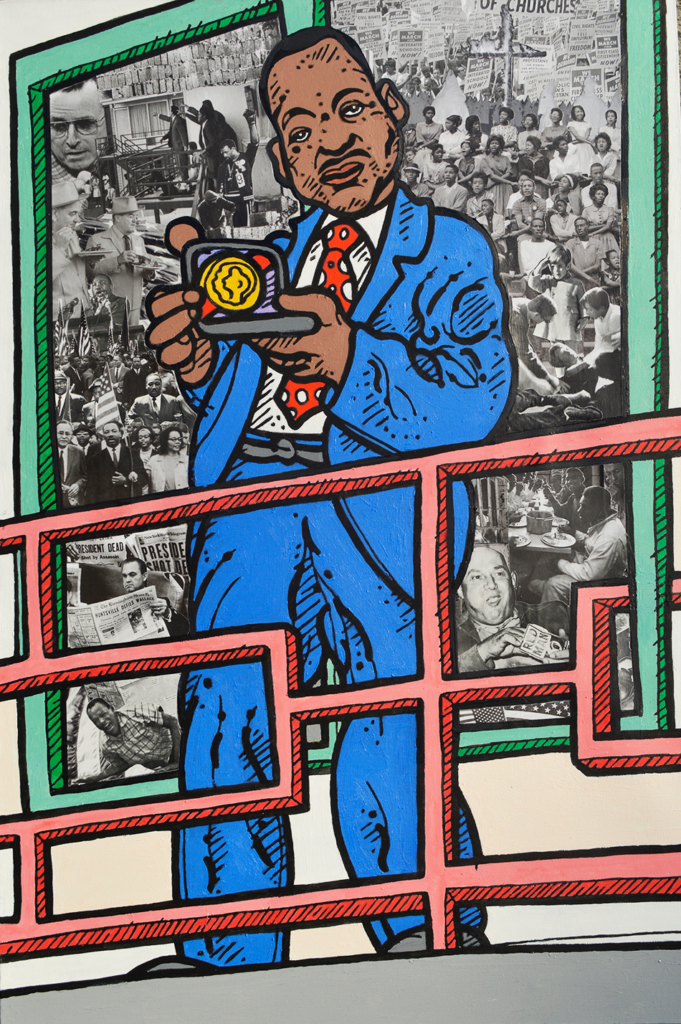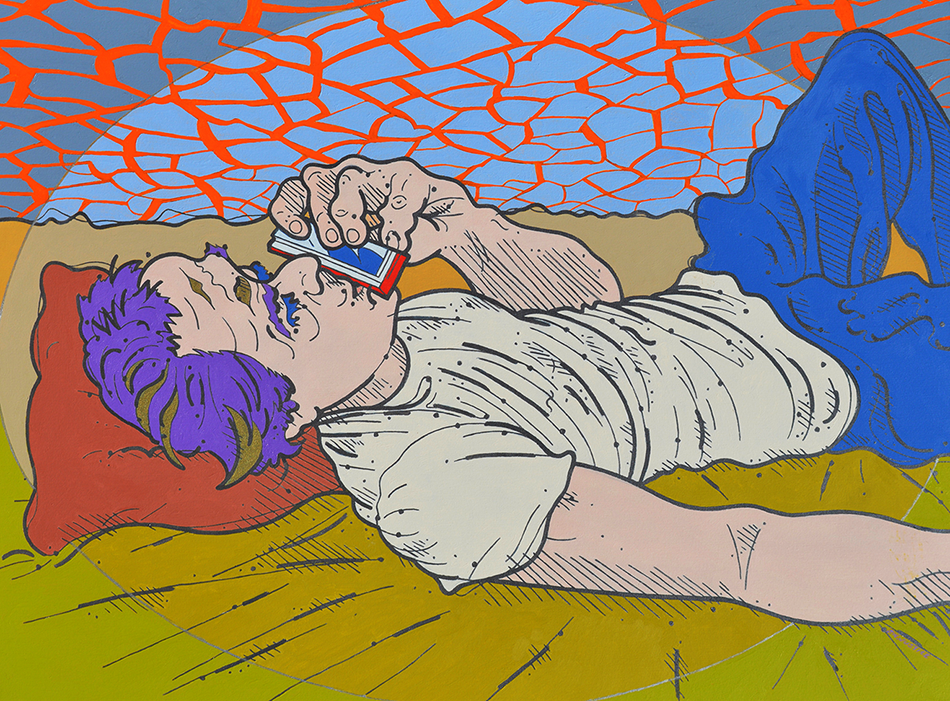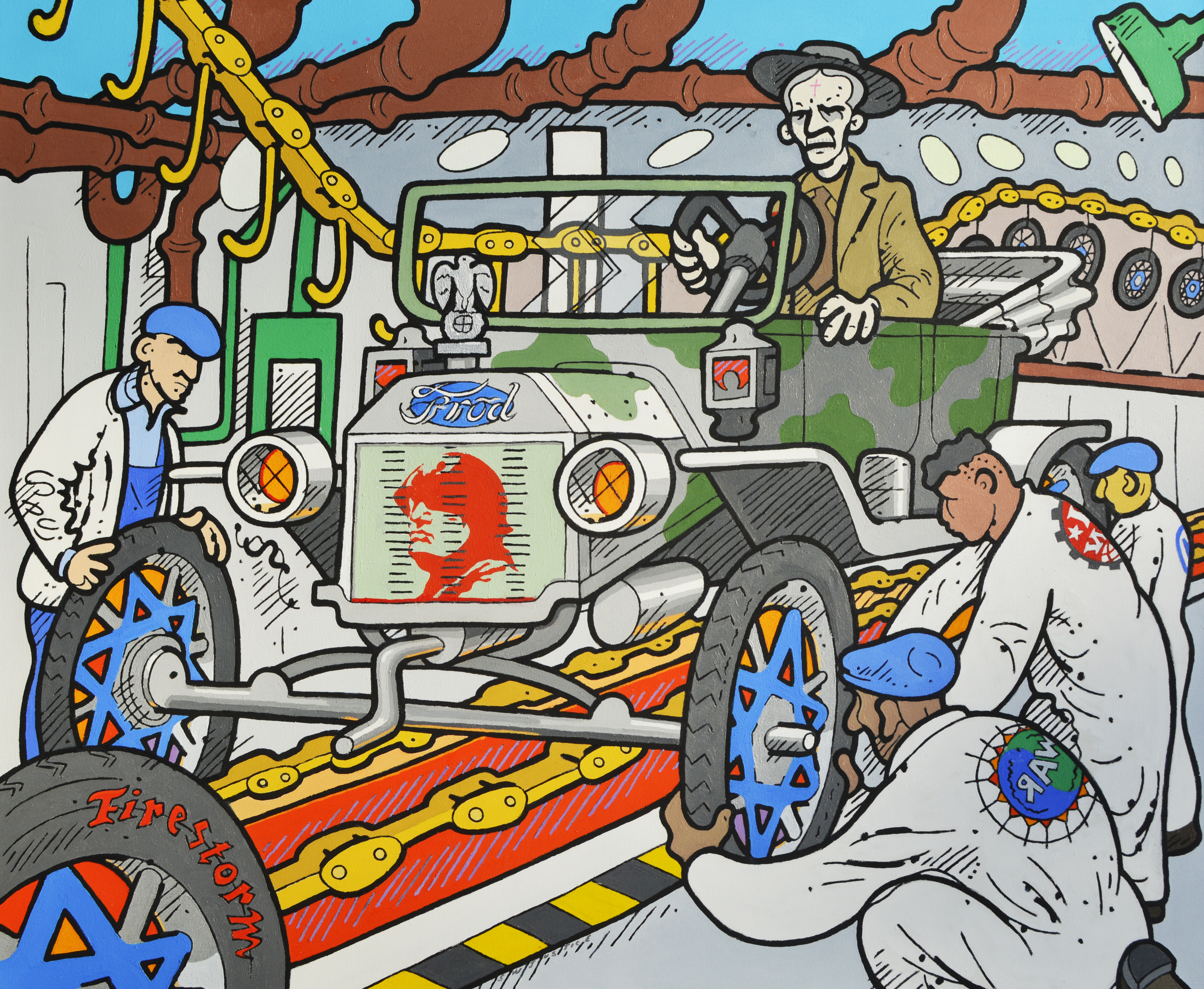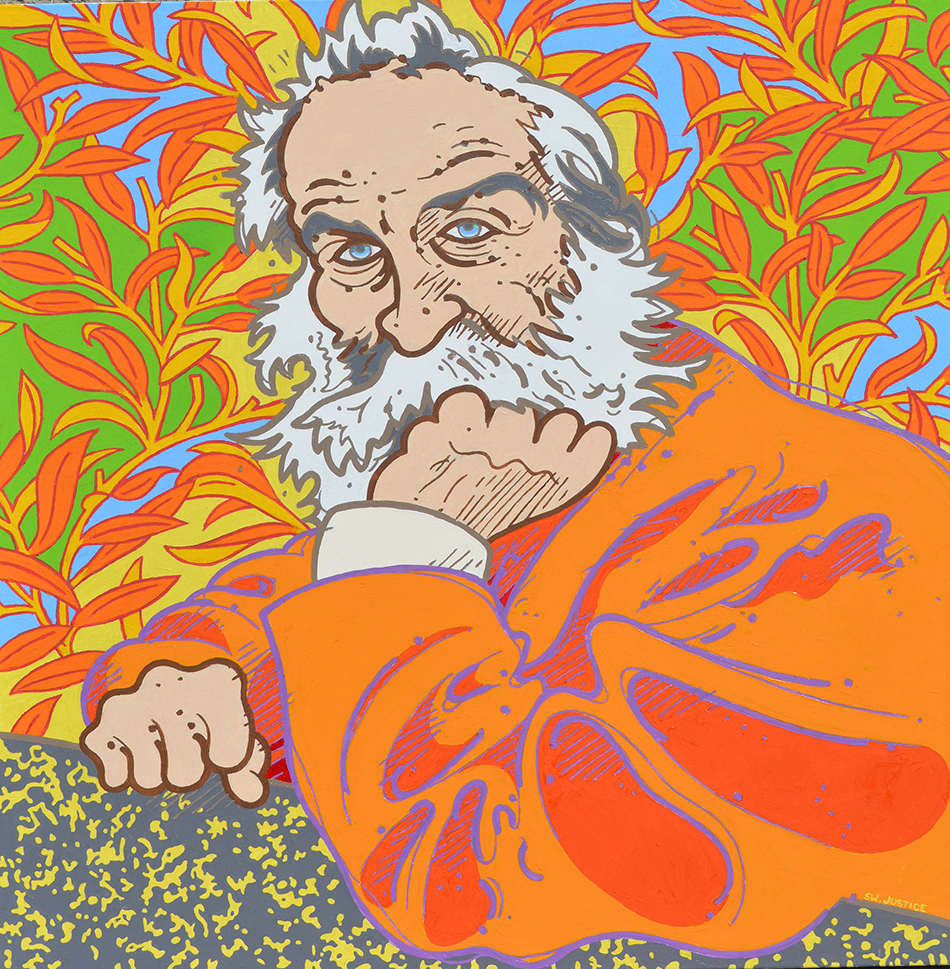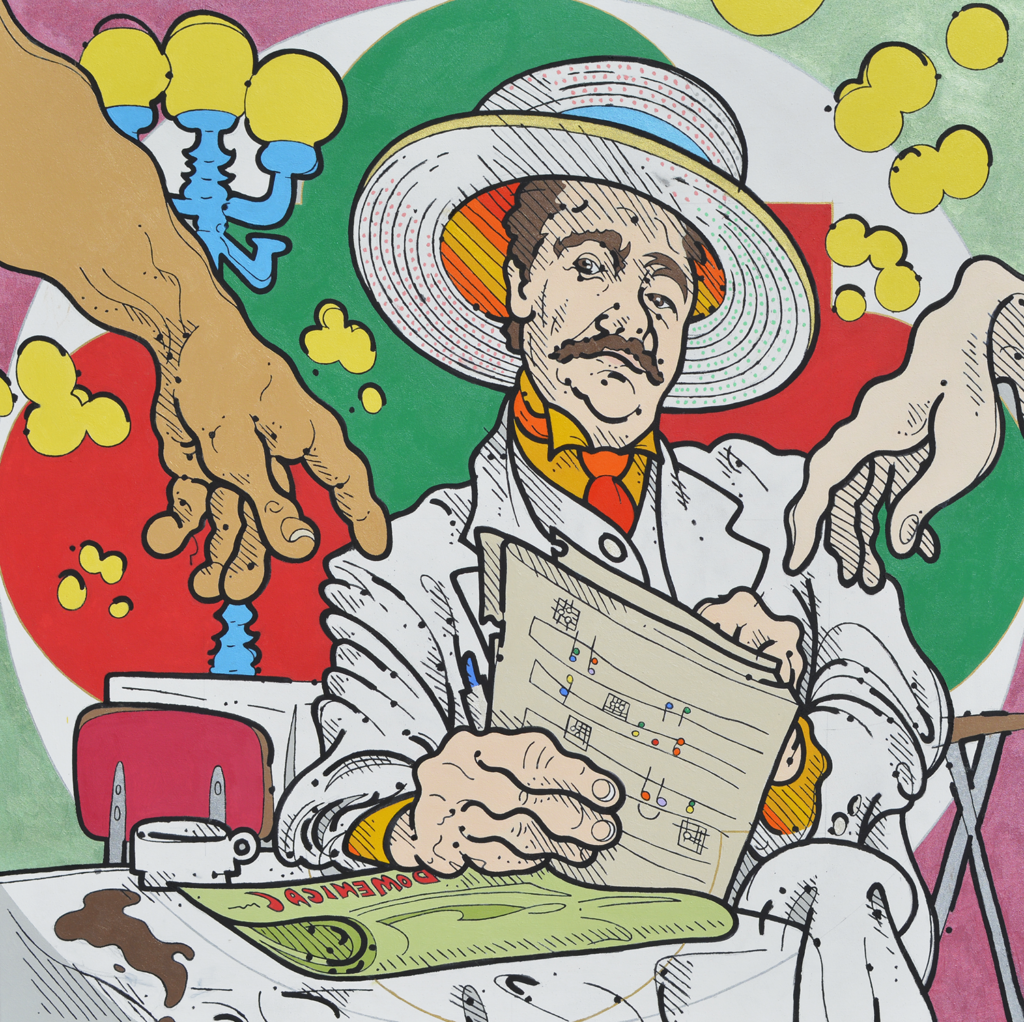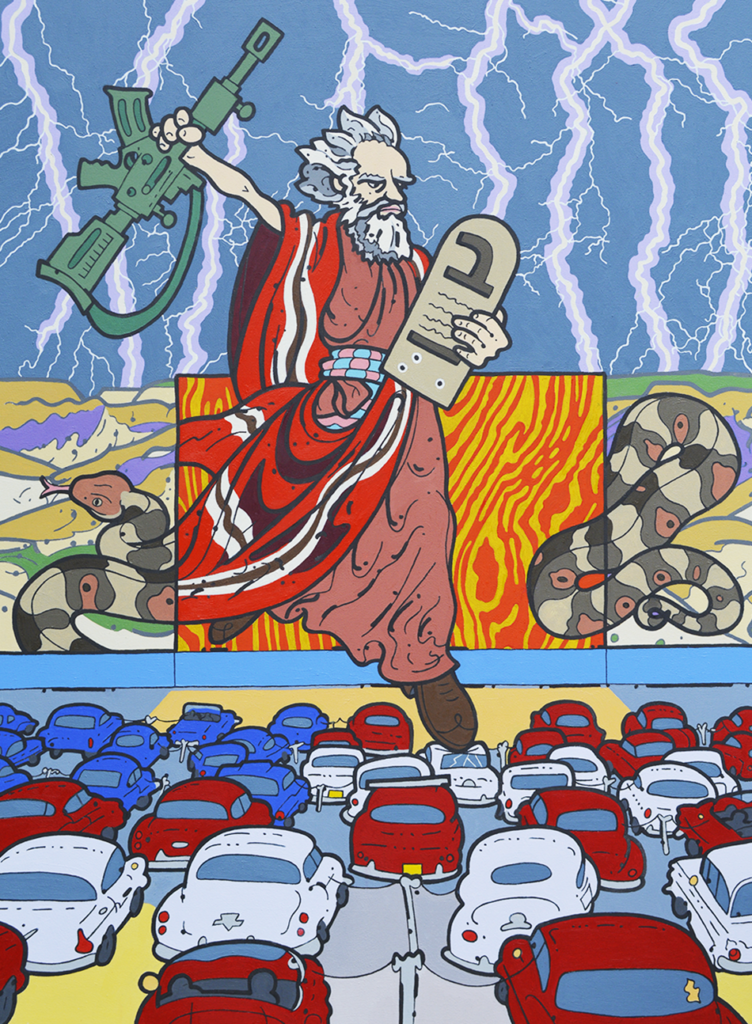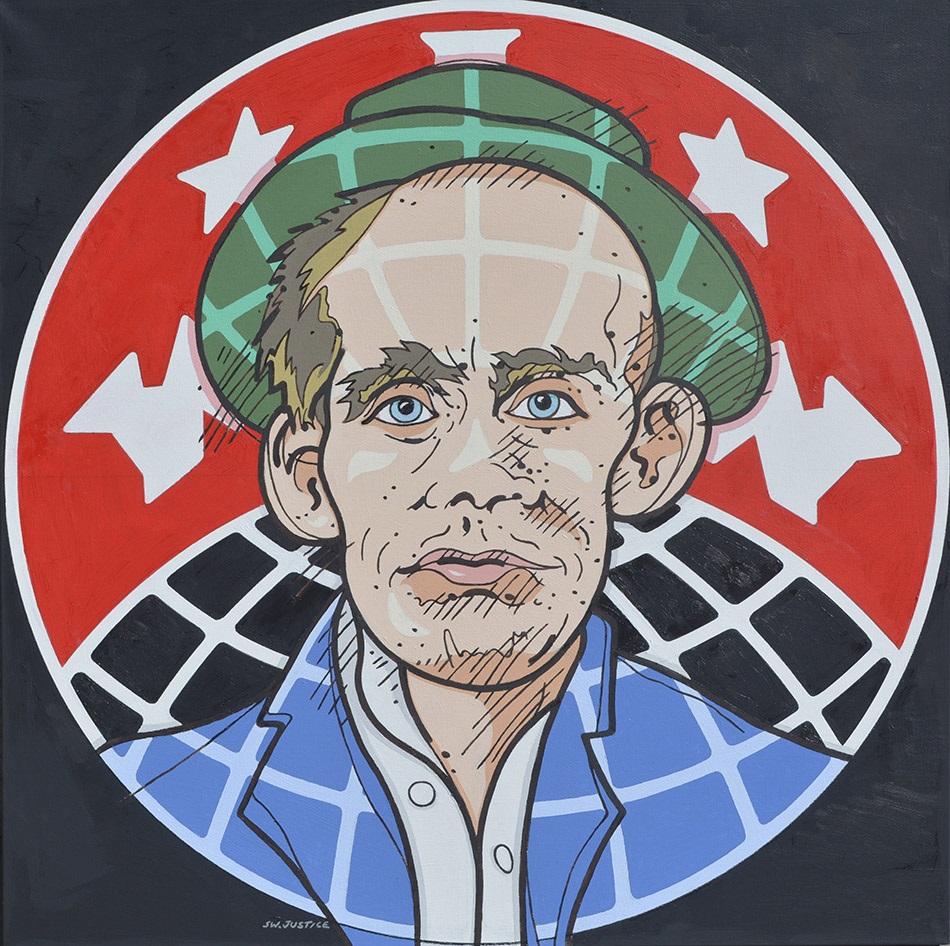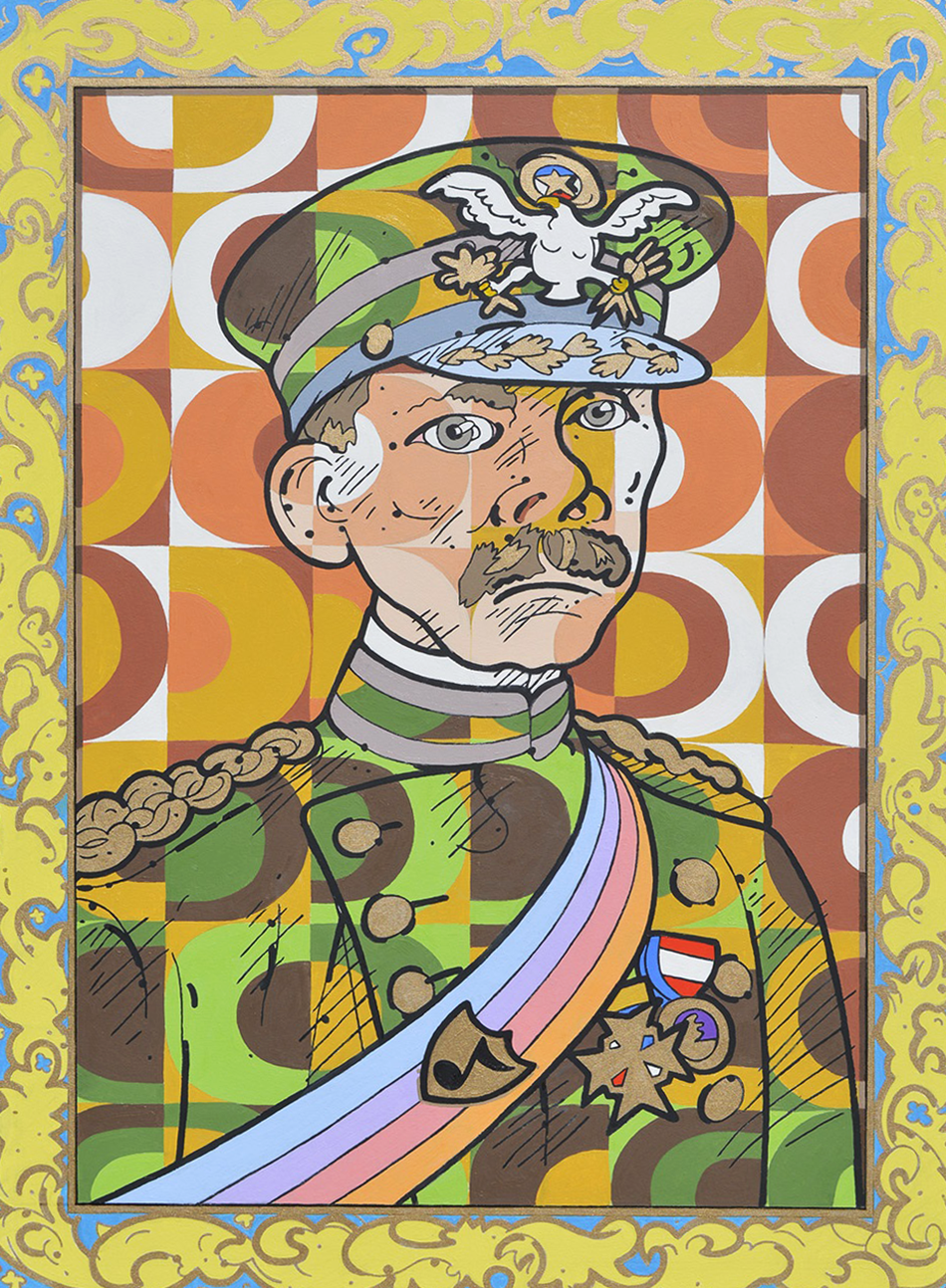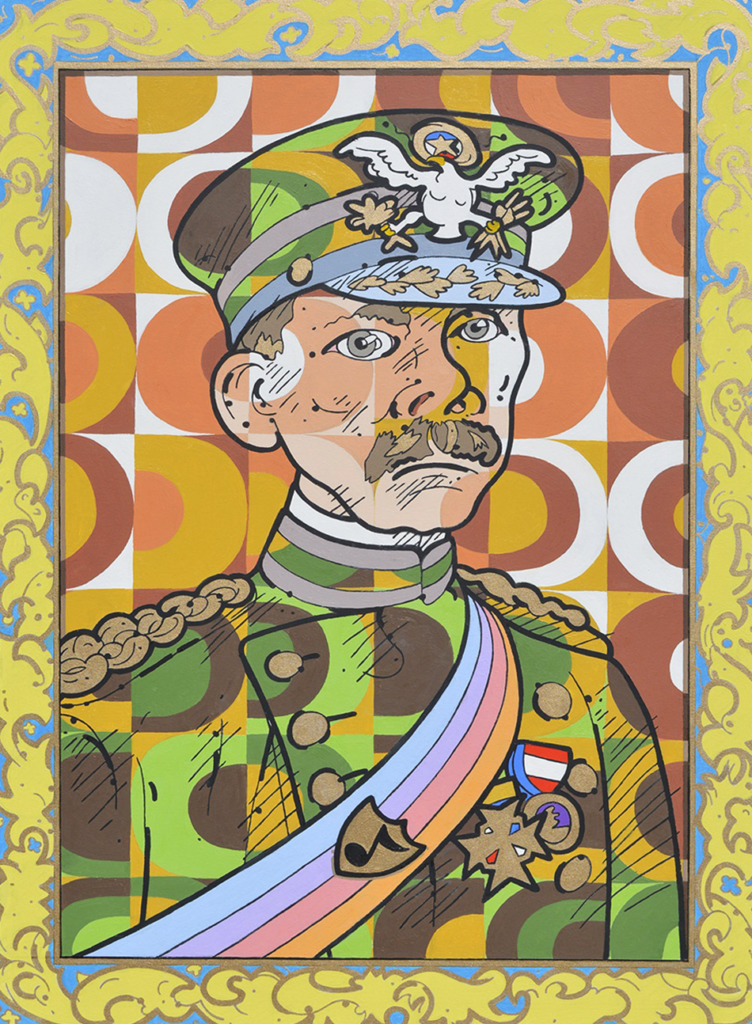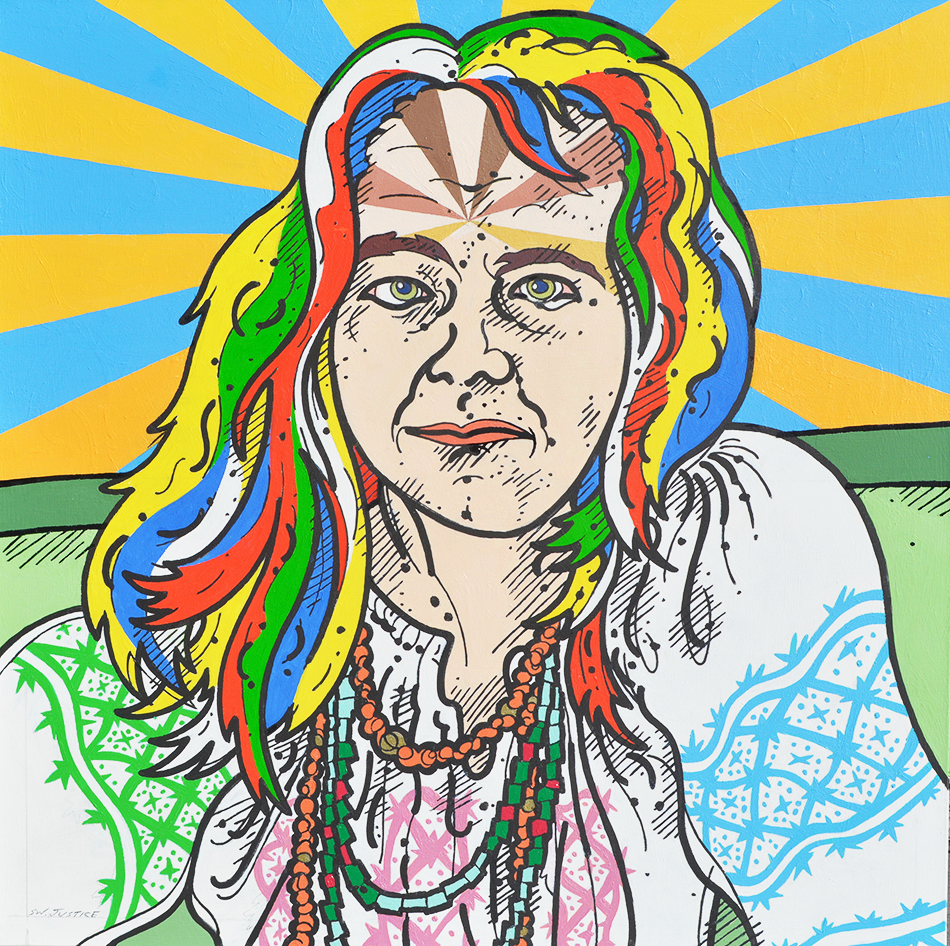
 Title: Outrider: portrait of Anne Waldman
Title: Outrider: portrait of Anne Waldman
Material: Oil on canvas
Size: 36×36
Year: 2019-20
If I smashed the traditions it was because I knew no traditions. I’m the girl with the unquenchable thirst. – Anne Waldman
Poets can take you places you never knew existed with amazing economy, and the view is great. I find poetry to be something like a hatchet to the head, but a friendly hatchet that only dents my head rather than splits my skull and spills my brains. But what’s another scar? It’s what’s inside my head that counts. It’s what’s inside my head that counts. It’s what’s inside my head that counts. (Uh-oh. Am I doing it again?) Poets are like other artists in that they are nothing but movers of energy. Moving energy might account for my hernia and displaced c.4 vertebrate, but my doctor disagrees. She says they’re because I ate paste and sniffed mimeographs in grade school.
When it comes to hipdom, Anne Waldman is royalty. She is associated with the core Beat poets – Kerouac, Snyder, Whalen, Ferlinghetti, Duncan, di Prima, Corso, and especially Allen Ginsburg, even though she’s young enough to be their daughter. Her parents were Greenwich post-war bohemians and she was active in the New York poetry scene, where she befriended Ginsberg, who introduced her to various other NY and San Francisco poets, as well as to Buddhism, world travel, new thought and political activism. A self-described poet, free woman and “outrider”, her own work shows her sensitivity to contradictions and energy imbalances in our society. She will aggressively take on sexual harassment, abortion rights, censorship, ecology or anything else that needs taking on.
In 1974 Waldman and some of her core Beat colleagues started Naropa University’s aptly named Jack Kerouac School of Disembodied Poets in Boulder, Colorado, which thrives to this day. In this painting I celebrate Anne’s Buddhism with her beads representing peace & harmony and determination, and her hair taking on on the characteristics of Tibetan wind-horse prayer flags. Her blouse? Pure hippie chic.
